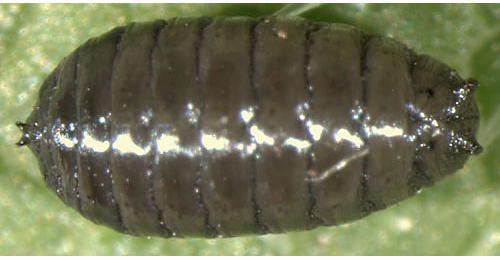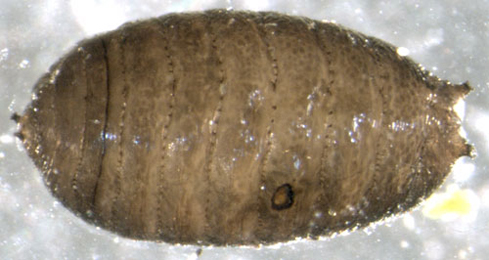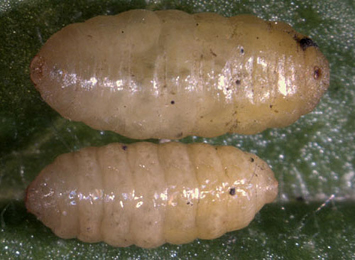|
||||||
|
LASERPITIUM. Broad-leaved Sermountain. [Apiaceae] |
|
Only one species of Laserpitium, the introduced Broad-leaved Sermountain (L. latifolium) is recorded in Britain. Four British miners are recorded on Laserpitium. A key to the European miners recorded on Laserpitium is provided in Bladmineerders van Europa. |
Key for the identification of the known mines of British |
1a > Leaf-miner: A regular greenish inter-parenchymal blotch mine, frequently delimited by two veins, appearing somewhat mottled as a result of small deeper areas of feeding through the upper parenchyma (Spencer, 1972b: 78 (fig. 259); Spencer, 1976: 428, 429 (fig. 748). The mine starts with a quite inconspicuous lower-surface corridor that soon changes into an extensive interparenchymatous blotch. The upper cell layer of the palisade parenchyma is eaten away in many places, giving the mine in transparency a perforated appearance. Fresh mines are pale green, later they turn brown; they give the leaves a strikingly diseased impression. Feeding lines absent, frass grains strikingly few. Larvae solitary. Pupation outside the mine, exit slit in lower epidermis. Forms a blotch mine between two veins, having a characteristic sieve-like appearance (where the larva has fed through the upper parenchyma). Pupation outside the mine.. |
 Phytomyza heracleana puparium Image: © Willem Ellis (Bladmineerders van Europa) |
|
Phytomyza heracleana Hering, 1937 [Diptera: Agromyzidae]. |
| 1b > Leaf-miner: Larva
forms an upper surface primary blotch with several larvae feeding
together; the blotch is greenish when fresh but becomes yellowish
with age (Spencer, 1972b:
78 (fig. 257); Spencer, 1976:
376, 377 (fig. 655)).
Round or oval blotch, green at first, later yellowish. Young mine are interparenchymatous, only the older mines are truly full depth. Generally several larvae in a communal mine. Pupation outside the mine. Exit slit in lower epidermis. A conspicuous, yellowish, almost circular upper surface blotch. Normally several mines on a leaf which may run together giving the impression of a single mine. |
 Phytomyza angelicae puparium, dorsal Image: © Willem Ellis (Bladmineerders van Europa) |
|
Phytomyza angelicae Kaltenbach, 1872 [Diptera: Agromyzidae]. |
| 1c > Leaf-miner: A large blotch, yellow or brown, preceded by a short, in the end mostly unrecognisable corridor. Generally several larvae in the mine. Especially in fresh mines the green primary and feeding lines area well marked. Pupation outside the mine. |
|
Cryptaciura rotundiventris (Fallén, 1814) [Diptera: Tephritidae]. |
1d > Leaf-miner: A large blotch, yellow or brown, preceded by a short corridor that in the end mostly is completely overrun. Generally several larvae share a mine. Especially in fresh mines the green primary and secondary feeding lines are well visible. Pupation outside the mine. Puparium yellow. |
 Euleia heraclei pupariria Image: © Willem Ellis (Bladmineerders van Europa) |
|
Euleia heraclei (Linnaeus, 1758) [Diptera: Tephritidae]. |
| Last updated 05-Jul-2019 Brian Pitkin | ||
